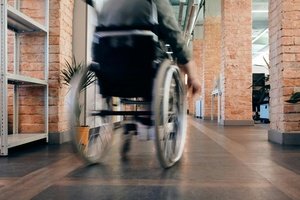Writing for resource provider MultiLit, senior research fellow Dr Jennifer Buckingham and Maddy Goto have weighed up a series of studies which have examined the cognitive and academic impact of using ‘brain breaks’ in the primary classroom.
In a recent Nomanis Notes article, the duo note it’s commonly thought that fracturing lessons with regular ‘brain breaks’ – usually quick physical or mindfulness/meditation activities that last between one and five minutes – helps to ‘reset and refocus’ students’ attention to better tackle learning tasks at hand.
The underlying rationale is that a brief switch in focus will allow children’s brains to reach a state of low cognitive load, thus triggering information being held in working memory to transit to long-term memory, before a learning activity is resumed, Buckingham and Goto note.
“For young children who are unused to sitting still and paying attention, or for children with attention and/or hyperactivity disorders, brain breaks are seen as a way to release energy and then re-engage with learning,” they add.
But the authors suggest that research charting the effects of physically active breaks on children’s academic achievement and cognitive function show mixed results at best.
A randomised controlled trial led by Dr Myrto Mavilidi from University of Wollongong tested the effects of different types of physical activity breaks on children’s on-task classroom behaviour and cognition, as well as their academic maths achievement.
Involving 87 primary-aged children, the study found that physical activity breaks did improve students’ on-task behaviour and maths scores.
Another study led by Deakin University’s Emiliano Mazzoli found classroom-based active breaks are a “feasible and effective way to reduce and break up sitting time, and to potentially benefit physical health in school children”.
However, their effect on children’s cognitive functions and brain activity remained unclear.
A Deakin University media release at the time highlighted that brain activity data showed that children doing the more complex active breaks used less brain power to complete the same tasks as children in usual lessons, suggesting their cognitive efficiency improved.
“You can think of this a bit like a car driving a greater distance using less fuel,” Mazzoli said.
“Physical activity within the school environment is often viewed as competing with educational goals, but these findings reveal the positive link between physical activity, cognitive function and educational attainment.”
Another 2021 study investigated active breaks taken by Year 4 and 5 students and reported a significant positive effect on attention but not reading comprehension,” Buckingam and Goto add.
“The reverse was reported for mindfulness breaks, with small positive effects on reading comprehension but no effect on attention.”
Meanwhile, a 2017 systematic review, which included four studies of academic achievement, found just one significant effect in maths outcomes, and a 2018 meta-analysis found that active breaks had a positive small to moderate effect on attention and mixed but weak results for reading and maths, Buckingam and Goto note.
“Likewise, Daly-Smith et al. (2018) described active breaks as resulting in no change in cognitive outcomes and weak effects on academic performance,” the authors flag.
A systematic review from 2020 found “inconclusive” effects of active breaks on children’s cognitive functions, concluding they have limited or no impact on academic achievement at all.
Buckingham and Goto recognise that while there’s ‘moderately positive’ evidence to suggest active breaks in the classroom boost children’s cognitive function, including attention and engagement, “this does not necessarily translate into learning”.
“There is mixed but weak evidence of the effect of active breaks and mindfulness breaks on academic achievement.
“This may be due to the quality of the studies, or differences in the type, frequency and duration of the breaks…” they suggest.
The NSW Department of Education promote brain breaks for ‘cognitive wellbeing’, saying they have a positive effect on learning, student-teacher relationships and classroom behaviour, among other stated benefits.
Buckingham took to X to clarify her position on the use of brain breaks in the classroom.
"A 30 second stretch is not going to do any harm at all and teachers are best placed to know if it’s needed. What these studies look at are activities that are up to 5 mins.
"It’s quite possible that further research will show a positive effect but this is a summary of the evidence so far," she commented.














